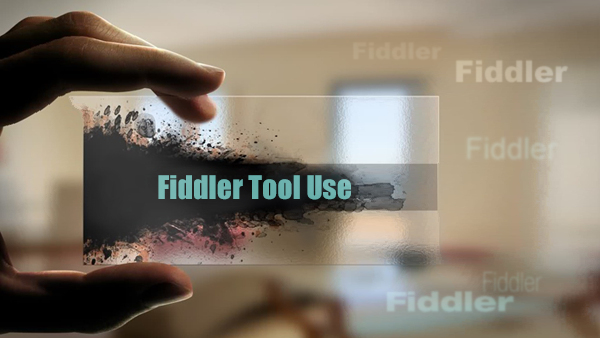本文详细介绍了如何搭建Vue项目环境,包括Node.js和NPM的安装,Vue CLI的使用,以及如何创建和配置Vue项目。此外,文章还涵盖了Vue基础组件的使用、路由管理与导航、状态管理与Vuex、组件间的通信,以及项目部署与基本调试等关键知识点,旨在帮助读者掌握Vue项目实战的全过程。
Vue项目环境搭建安装Node.js和NPM
要开始使用Vue,首先需要安装Node.js及其包管理工具NPM。Node.js是一个基于Chrome V8引擎的JavaScript运行环境,而NPM是Node.js的包管理工具。完整的Node.js安装包括了NPM。
- 安装Node.js
可以通过Node.js的官方网站下载最新版本的Node.js,网址为https://nodejs.org/。安装时,确保选择包含NPM的安装包。安装完成后,可以通过命令行检查Node.js和NPM是否安装成功:
node -v # 输出Node.js版本
npm -v # 输出NPM版本安装Vue CLI
Vue CLI是Vue.js的脚手架工具,可以快速搭建Vue项目,简化了项目的初始化和配置过程。安装Vue CLI需要通过NPM:
npm install -g @vue/cli安装完成后,可以通过命令行检查Vue CLI是否安装成功:
vue --version创建Vue项目
安装完Vue CLI后,可以通过命令行创建一个新的Vue项目。首先,创建一个目录来存放项目,然后在该目录中运行vue create命令。接下来,可以在创建的项目中进一步配置,例如选择预设的配置或手动选择特性。
mkdir my-vue-app
cd my-vue-app
vue create my-app这里,my-app是项目的名称,可以自由命名。运行vue create命令后,会弹出一个选项菜单,可以根据需要选择项目配置。例如,可以选择预设的配置或手动选择特性,选择完成后,Vue CLI会自动完成项目的初始化。
Vue CLI v4.5.0
? Please pick a preset (Use arrow keys to navigate, and press enter to select):
Manually select features小结
通过上述步骤,完成Vue项目的环境搭建,包括Node.js和NPM的安装,Vue CLI的安装,以及使用Vue CLI创建一个新的Vue项目。
Vue基础组件使用组件定义和使用
Vue应用的构建围绕组件展开,组件是可重用的独立模块,封装了可复用的代码。一个组件定义通常包括模板、逻辑和样式。
创建组件
在src/components目录下创建一个名为HelloWorld.vue的文件,书写一个简单的组件:
<template>
<div class="hello">
<h1>{{ msg }}</h1>
</div>
</template>
<script>
export default {
name: 'HelloWorld',
props: {
msg: String
}
}
</script>
<style scoped>
.hello {
color: #42b983;
}
</style>使用组件
在App.vue中引入并使用HelloWorld组件:
<template>
<div id="app">
<HelloWorld msg="Welcome to Your Vue.js App"/>
</div>
</template>
<script>
import HelloWorld from './components/HelloWorld.vue'
export default {
name: 'App',
components: {
HelloWorld
}
}
</script>
<style>
#app {
font-family: Avenir, Helvetica, Arial, sans-serif;
-webkit-font-smoothing: antialiased;
-moz-osx-font-smoothing: grayscale;
text-align: center;
color: #2c3e50;
margin-top: 60px;
}
</style>组件属性传递和使用
组件属性传递通过props实现,可以将数据从小组件传递到父组件。继续使用上面的HelloWorld组件:
父组件传递属性
在父组件中定义props,并通过属性传递到子组件:
<template>
<div id="app">
<HelloWorld msg="Hello, props from parent"/>
</div>
</template>
<script>
import HelloWorld from './components/HelloWorld.vue'
export default {
name: 'App',
components: {
HelloWorld
}
}
</script>子组件接收属性
在子组件中定义props,接收父组件传递的数据:
<template>
<div class="hello">
<h1>{{ msg }}</h1>
</div>
</template>
<script>
export default {
name: 'HelloWorld',
props: {
msg: String
}
}
</script>
<style scoped>
.hello {
color: #42b983;
}
</style>插槽(Slots)的使用
插槽允许子组件定义内容,父组件控制内容的展示。创建一个带有内容插槽的子组件:
<template>
<div class="slot-example">
<h2>Default slot</h2>
<slot></slot>
</div>
</template>
<script>
export default {
name: 'SlotExample'
}
</script>
<style scoped>
.slot-example {
color: #2c3e50;
}
</style>在父组件中定义和使用插槽:
<template>
<div id="app">
<SlotExample>
<p>This content is provided by the parent component.</p>
</SlotExample>
</div>
</template>
<script>
import SlotExample from './components/SlotExample.vue'
export default {
name: 'App',
components: {
SlotExample
}
}
</script>小结
通过组件定义、属性传递和插槽的使用,可以构建灵活、可重用的Vue组件。这为开发复杂的应用提供了基础。
路由管理与导航安装和配置Vue Router
Vue Router是Vue.js官方的路由管理器,用于构建单页面应用程序。它支持动态路由、懒加载组件、导航守卫等功能。
安装Vue Router
使用vue add router命令安装Vue Router:
vue add router配置Vue Router
在src/router/index.js中配置路由:
import Vue from 'vue'
import Router from 'vue-router'
import Home from './views/Home.vue'
import About from './views/About.vue'
Vue.use(Router)
export default new Router({
routes: [
{
path: '/',
name: 'home',
component: Home
},
{
path: '/about',
name: 'about',
component: About
}
]
})创建和注册路由
创建路由组件需要在src/views目录下新建组件文件,如Home.vue和About.vue。然后在App.vue中注册路由组件:
<template>
<div id="app">
<router-view></router-view>
</div>
</template>
<script>
export default {
name: 'App'
}
</script>路由参数和查询参数
路由参数
配置带参数的路由:
{
path: '/user/:id',
name: 'user',
component: User
}在组件中访问参数:
<template>
<div>
<h2>User {{ $route.params.id }}</h2>
</div>
</template>
<script>
export default {
name: 'User'
}
</script>查询参数
使用?符号传递查询参数:
{
path: '/search',
name: 'search',
component: Search,
}在组件中访问查询参数:
<template>
<div>
<h2>Search term: {{ $route.query.q }}</h2>
</div>
</template>
<script>
export default {
name: 'Search'
}
</script>小结
通过Vue Router,可以方便地管理单页面应用程序的路由,实现动态页面导航、参数传递等功能。
状态管理与Vuex安装和初始化Vuex
Vuex是一个专为Vue.js应用程序开发的状态管理模式。它是一个集中式状态管理库,用于管理应用程序的全局状态。
安装Vuex
在项目中安装Vuex:
npm install vuex --save初始化Vuex
创建src/store/index.js文件,初始化Vuex:
import Vue from 'vue'
import Vuex from 'vuex'
Vue.use(Vuex)
export default new Vuex.Store({
state: {
count: 0
},
mutations: {
increment(state) {
state.count++
}
},
actions: {
increment({ commit }) {
commit('increment')
}
},
getters: {
count: state => state.count
}
})State、Mutations、Actions和Getters的使用
State
状态对象包含应用程序的状态数据。
Mutations
Mutations是更改状态的唯一方法,必须是同步的。
Actions
Actions可以异步地执行,通过提交mutations来改变状态。
Getters
Getters用于从state中获取数据,可以作为计算属性来使用。
在组件中使用Vuex
在组件中使用Vuex需要先引入store:
<template>
<div>
<h2>Count: {{ count }}</h2>
<button @click="increment">Increment</button>
</div>
</template>
<script>
import { mapState, mapActions } from 'vuex'
export default {
computed: {
...mapState(['count'])
},
methods: {
...mapActions(['increment'])
}
}
</script>小结
通过Vuex,可以将状态管理和逻辑处理集中化,使得状态管理更加清晰和方便。
组件间的通信父子组件通信
父组件可以通过props向子组件传递数据,子组件通过$emit触发事件,父组件监听事件来获取数据。
父组件
<template>
<div>
<h2>Parent</h2>
<Child :message="parentMessage" @child-event="handleChildEvent"/>
</div>
</template>
<script>
import Child from './Child.vue'
export default {
components: {
Child
},
data() {
return {
parentMessage: 'Hello from Parent'
}
},
methods: {
handleChildEvent(data) {
console.log('Child event:', data)
}
}
}
</script>子组件
<template>
<div>
<h2>Child</h2>
<button @click="sendMessage">Send Message</button>
</div>
</template>
<script>
export default {
props: ['message'],
methods: {
sendMessage() {
this.$emit('child-event', { data: 'Hello from Child' })
}
}
}
</script>兄弟组件通信
可以通过一个父组件作为中转,或者使用Vue Router的props来传递数据。
中转父组件
<template>
<div>
<h2>Parent</h2>
<Child1 :message="parentMessage" @child1-event="handleChildEvent1"/>
<Child2 :message="parentMessage" @child2-event="handleChildEvent2"/>
</div>
</template>
<script>
import Child1 from './Child1.vue'
import Child2 from './Child2.vue'
export default {
components: {
Child1,
Child2
},
data() {
return {
parentMessage: 'Hello from Parent'
}
},
methods: {
handleChildEvent1(data) {
console.log('Child1 event:', data)
},
handleChildEvent2(data) {
console.log('Child2 event:', data)
}
}
}
</script>通过props传递
<template>
<div>
<Child1 :message="parentMessage"/>
<Child2 :message="parentMessage"/>
</div>
</template>
<script>
import Child1 from './Child1.vue'
import Child2 from './Child2.vue'
export default {
components: {
Child1,
Child2
},
data() {
return {
parentMessage: 'Hello from Parent'
}
}
}
</script>非父子组件通信
可以使用事件总线或Vuex进行组件间通信。
事件总线
创建一个事件总线对象,并在需要通信的组件中使用它:
// src/eventBus.js
import Vue from 'vue'
export const eventBus = new Vue()<template>
<div>
<h2>Child1</h2>
<button @click="sendMessage">Send Message</button>
</div>
</template>
<script>
import { eventBus } from '../eventBus'
export default {
methods: {
sendMessage() {
eventBus.$emit('message-event', { data: 'Hello from Child1' })
}
}
}
</script><template>
<div>
<h2>Child2</h2>
<button @click="handleMessage">Handle Message</button>
</div>
</template>
<script>
import { eventBus } from '../eventBus'
export default {
created() {
eventBus.$on('message-event', this.handleMessage)
},
methods: {
handleMessage(data) {
console.log('Message:', data)
}
}
}
</script>Vuex
使用Vuex进行组件间通信,可以在多个组件间共享状态。
// src/store/index.js
import Vue from 'vue'
import Vuex from 'vuex'
Vue.use(Vuex)
export default new Vuex.Store({
state: {
sharedMessage: ''
},
mutations: {
setMessage(state, message) {
state.sharedMessage = message
}
},
actions: {
setMessage({ commit }, message) {
commit('setMessage', message)
}
},
getters: {
sharedMessage: state => state.sharedMessage
}
})<template>
<div>
<h2>Child1</h2>
<button @click="sendMessage">Send Message</button>
</div>
</template>
<script>
import { mapActions, mapGetters } from 'vuex'
export default {
methods: {
sendMessage() {
this.setMessage('Hello from Child1')
}
},
computed: {
...mapGetters(['sharedMessage'])
},
...mapActions(['setMessage'])
}
</script><template>
<div>
<h2>Child2</h2>
<button @click="handleMessage">Handle Message</button>
</div>
</template>
<script>
import { mapGetters } from 'vuex'
export default {
computed: {
...mapGetters(['sharedMessage'])
},
methods: {
handleMessage() {
console.log('Message:', this.sharedMessage)
}
}
}
</script>小结
通过多种方法实现组件间的通信,包括父子组件通信、兄弟组件通信和非父子组件通信。使用事件总线或Vuex可以方便地在非父子组件间传递数据。
项目部署与基本调试项目打包与部署
打包项目
使用Vue CLI提供的命令进行项目打包:
npm run build打包完成后,会在项目目录的dist文件夹中生成静态资源文件,包括HTML、CSS、JavaScript等。
部署项目
将dist文件夹内的文件上传到服务器或通过CDN部署到静态页面服务器。例如,可以将这些文件放置在Apache或Nginx服务器上。
常见错误排查与调试技巧
开发工具调试
使用Chrome DevTools进行前端调试,使用console.log打印日志,或使用Vue Devtools插件进行Vue应用的调试。
错误排查
常见的错误类型包括404错误、500错误和JavaScript错误。检查服务器配置、网络请求和代码逻辑。
代码调试技巧
- 使用断点进行代码调试。
- 使用
Vue.use(VueRouter)时,检查路由配置是否正确。 - 在使用Vuex时,检查状态变更是否符合预期。
小结
通过打包部署和调试技巧,确保Vue项目在生产环境中运行稳定。

 随时随地看视频
随时随地看视频



